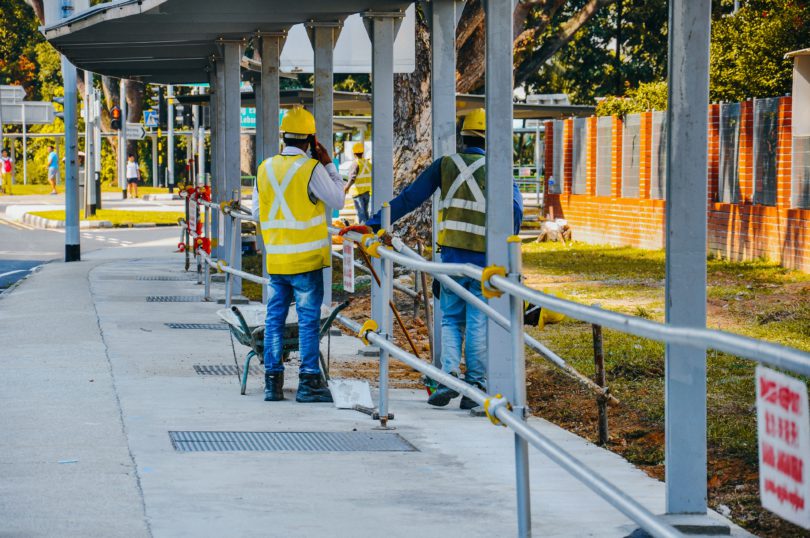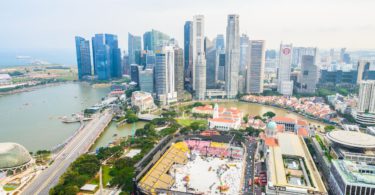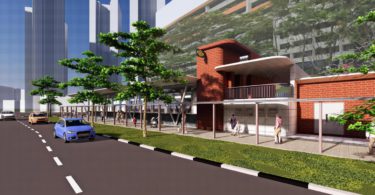By May Ng, Queenie Chan and Andrew Wong, DLA Piper
The construction industry has a key role to play in the transition to a low carbon economy. It is not only an industry that builds, but it is also a key pillar supporting investments, transportation and growth in our communities. Statistics have suggested that the construction industry is responsible for close to 40 per cent of global energy consumption and 25 per cent of global carbon emission. It also has used about 50 per cent of the world’s natural resources and accounted for around 30 to 40 per cent of land fill waste generated globally. Construction activities have led to alarming levels of air and water pollution as well as destruction of habitats. The list goes on.
ESG IN ASIA—A MISMATCH BETWEEN AMBITION AND REALITY
Here in Asia, where the majority of the world’s population resides, environmental impacts are most felt. According to the International Federation of Red Cross and Red Crescent Societies, more than 57 million people in Asia were affected by climate change in 2021. Southeast Asia has seen sea levels rising faster than any other parts of the world due to the number of low-lying countries in the region. It is therefore not surprising that governments within the region have prioritised sustainable development for their construction sectors and set some of the most aggressive green targets.
As Environmental, Social, and Governance (ESG) is still a relatively new concept in Asia, many in the industry are only beginning their journey of understanding and implementing an ESG-compliant framework to ensure that ESG values are embedded throughout their business operations. This journey is not one without obstacles.
In late 2022, DLA Piper’s global construction team surveyed 100 senior executives within the construction industry among which one-third of them were based in Asia. The findings were published in the industry report Constructing the Future: Striving and thriving in the era of disruption. It was found that 70 per cent of the construction organisations surveyed have net zero goals as part of their long-term ESG-related objectives for their operations and supply chain. Interestingly however, only 18 per cent believe that they are well-prepared to achieve the targets. This apparent mismatch between ESG ambition and reality is only found in Asia.
ENVIRONMENTAL STEWARDSHIP, SOCIAL IMPACT AND GOOD GOVERNANCE
Many Asian countries have set very aggressive environmental targets and adopted various plans to promote sustainable construction.
Hong Kong
The Hong Kong’s Climate Action Plan 2030+ sets out the carbon emission target of 26 to 36 per cent absolute carbon reduction by 2030. The Construction Industry Council (CIC) has also suggested that the industry should seek to achieve an 11 per cent carbon reduction against business-as-usual levels by 2030. A number of initiatives have been adopted to promote such goals, including setting up a certified environmental and carbon assessment tool for the industry, namely the Building Environmental Assessment Method (BEAM) Plus. A common platform is also established to evaluate the carbon performance of buildings and infrastructure from raw material extraction to the end of construction.
In addition, the Hong Kong Government has introduced a gross floor area concession incentive scheme in 2011. The Buildings Department will grant bonus gross floor area to projects that have complied with the Sustainable Building Design Guidelines, submitted relevant energy efficiency data and completed the BEAM Plus assessment.

Hong Kong strives to decarbonise the construction industry for sustainable development; image by Catgirlmutant/Unsplash
Singapore
The 4th Green Building Masterplan was launched in 2021 and last updated in July 2022. The masterplan aims to deliver three targets of “80-80-80 in 2030”: greening 80 per cent of the buildings in Singapore by 2030; attaining super low energy rating for 80 per cent of new developments; and achieving 80 per cent improvement in energy efficiency for best-in-class green buildings by 2030.
To achieve the targets, the mandatory environmental sustainability standards for buildings have been enhanced. These include the Green Mark Incentive Scheme, an outcome-based incentive scheme to encourage improvement of existing buildings to achieve environmental sustainability standards beyond legislative standards; the Green Buildings Innovation Cluster Programme that aims at promoting technology and innovation for high energy efficiency buildings; and the gross floor area incentive scheme.
Malaysia
Sustainability is identified as one of the core values of the Construction 4.0 Strategic Plan published by the Construction Industry Development Board Malaysia in 2020. Moreover, in the Green Technology Master Plan 2017–2030 published by the Ministry of Energy, Green Technology and Water in 2017, some key aspects included green building design and operation; sustainable construction practices; and green building materials.
As part of Malaysia’s drive to reduce carbon emissions, the Code of Practice for Energy Efficiency in Non-Residential Buildings was introduced to provide recommended measures and prescribed energy performance standards for different elements of buildings. Certified green building projects in Malaysia can receive 100 per cent tax exemption on additional capital expenditure. Furthermore, owners of buildings and residential properties are eligible for stamp duty exemption based on additional costs of obtaining green building certification.

Tax incentives are offered to certified green building projects in Malaysia; image by Hendri Sabri/Unsplash
Indonesia
The Ministry of Public Works and Public Housing has enacted Decree No: 05/PRT/M/2015 of general guidelines for the implementation of sustainable construction in infrastructure projects execution, which highlighted the Government’s commitment on sustainable construction practice.
The Green Building Council Indonesia was appointed as the first green building certification agency while the Ministry of Public Works and Public Housing has launched a separate green building rating system for buildings fulfilling the required technical standards. Under the certification scheme, an owner or developer of a certified building has the right to obtain incentives from the provincial and local governments in the form of relief from building approvals and/or services; compensation for construction of additional floors; technical support or expert assistance; and recognition by way of certificates, place cards and publications.

The Indonesia Government is committed to promoting sustainable construction practice; image by Muhammad Ramdan/Unsplash
These policies and initiatives not only reflect the strong ambition of governments within the region to combat climate change, but also represent the high expectations from investors, customers, stakeholders and the wider community for ESG compliance and more sustainable construction practices.
According to our report, construction companies operating in Asia are increasingly aware of the serious consequences of failing to adopt ESG principles. They found that having transparent ESG records and commitments are more likely to meet increasing regulatory requirements and stakeholder expectations; help securing government contracts; and gain preferential access to capital markets.
BARRIERS AND DIFFICULTIES TO ACHIEVING ESG TARGETS
Some common ESG indicators used to evaluate construction projects in Asia focus on whether the building materials and components are energy efficient; whether the design and construction methods are carbon intensive or environmentally efficient; whether appropriate controls and processes are in place to reduce resource consumption, waste and pollution; and whether effective policies are implemented to protect the welfare and diversity of the people, staff and the wider community within the construction supply chain.
An ESG-compliant construction company in Asia should adopt good environmental stewardship practices taking into account all the factors mentioned above; create meaningful social impact with its projects; and operate under good governance in a transparent manner and in the best interests of its stakeholders.
To achieve the ESG targets, organisations should take into account, among other things:
- strong commitment to and knowledge of sustainable values;
- robust leadership in promoting sustainable values by formulating policies, implementing procedures and disseminating best practices throughout the construction process;
- effective strategy for green design and material selection, energy and waste management;
- strategic metrics to analyse and review sustainable construction practice;
- holistic sustainable practices throughout the organisation and supply chains;
- intra-organisational coordination and leadership in promoting sustainable practices;
- innovation and technology support; and
- transparent and accurate reporting and disclosure standards.
Additionally, the lack of standardised and recognised ESG metrics has been identified by the respondents as a major obstacle to deliver their ESG promises in Asia. The diverse approach taken by different governments on mandating sustainable construction is one of the varying reasons. Many of the ESG standards remain voluntary and regulations in some countries are ambiguous, which could be difficult to follow at times. Construction organisations, especially those operating across the region in multiple jurisdictions, are facing difficulties in finding systematic and consistent metrics to evaluate its operations and projects. Consequently, a wide range of frameworks often involve ‘mixing and matching’ different standards and requirements were being applied to address ESG issues. It becomes challenging for them to implement a consistent practice and sync with cross border partners.
Besides, the difficulty in finding low or net zero materials is another significant economic barrier, especially for small and medium enterprises. The cost of low or net zero building materials in Asia remain high and sourcing these materials remains a global challenge. Many Asian construction companies are also still navigating and dealing with supply chain challenges and disruptions brought about by COVID-19, making them even more difficult to find and use low-carbon alternative building materials. Tackling this problem requires a top-down approach and support from the whole industry. Developers and employers need to be more focused on pricing their projects realistically and reviewing the contracts’ price adjustment and fluctuation mechanisms to avoid contractors from walking away from their green commitments.

Sourcing of low or net zero materials remains a global challenge; image by Jéan Béller/Unsplash
The COVID-19 pandemic and the unprecedented global price inflation are affecting all aspects of the construction industry in the region. However, we cannot lose sight of the fact that ESG principles and values cannot be implemented overnight.
It is abundantly clear that long-term ESG targets have to be more than just an aspiration or catchphrase in Asia. The regulators, financing institutions and other stakeholders are increasingly demanding and expecting to see how companies are backing up their sustainability claims and real strategies for delivering the ESG promises. Construction organisations that are unable to demonstrate their ESG strategies will put the resilience and sustainability of their businesses at risks. They also have to be alive to the legal and reputational risks of greenwashing by plastering ESG goals and sustainability buzzwords across marketing or tendering materials but failing to explain how to achieve those targets, which could lead to serious backlashes. —Construction+ Online












